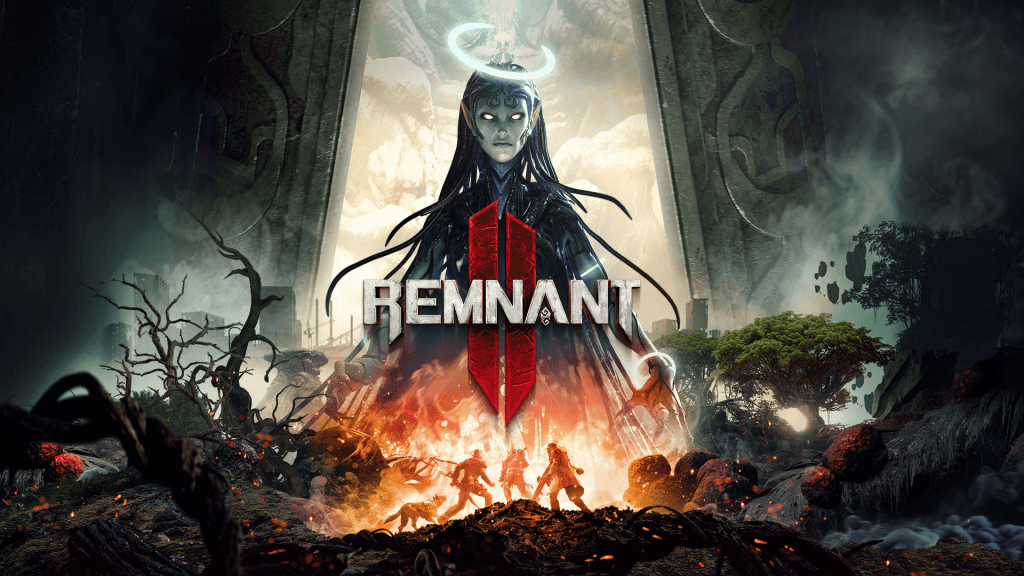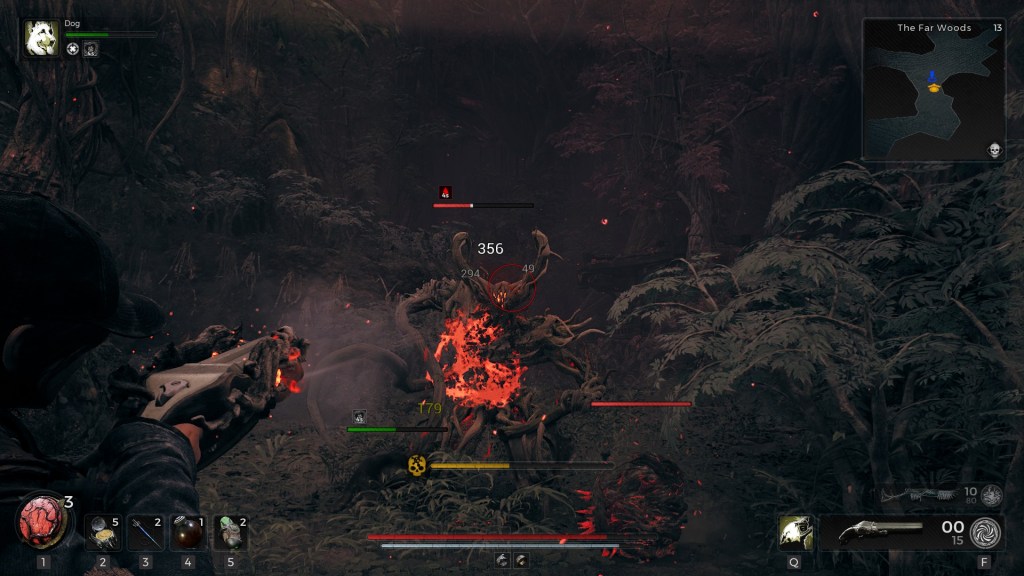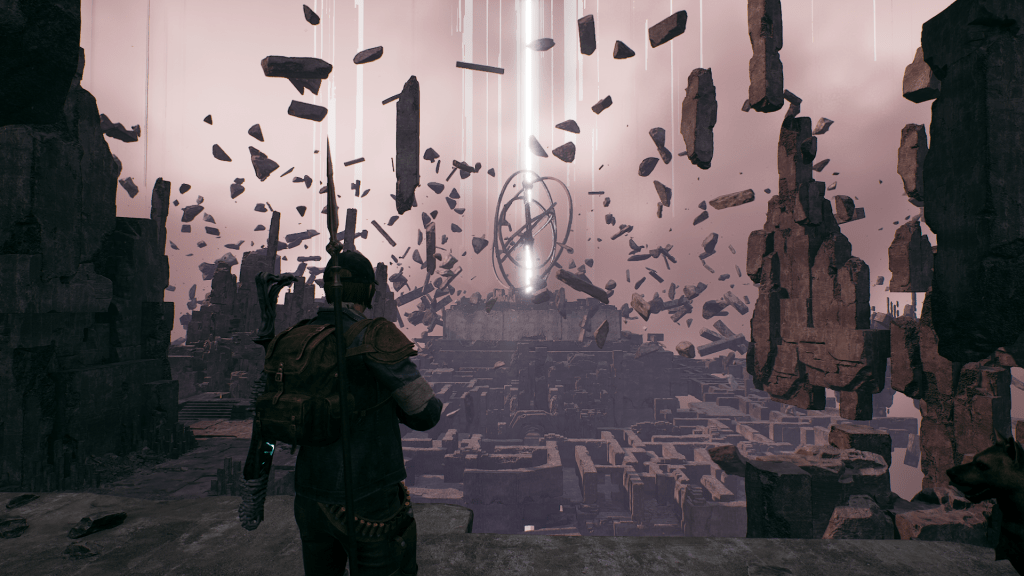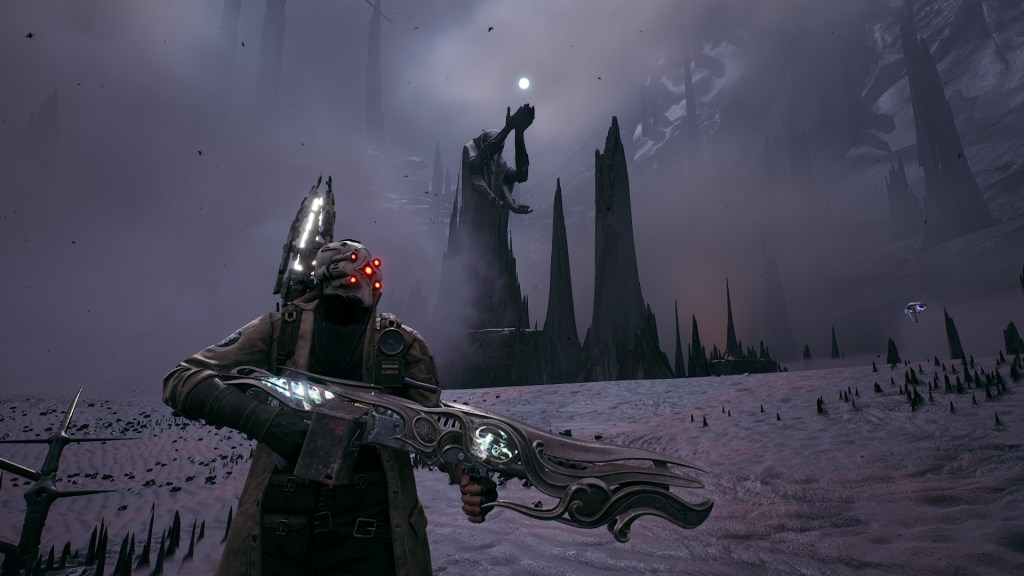Review: Remnant II

In 2019, Remnant: From The Ashes showed up on the scene with an interesting fusion of third-person cooperative shooting gameplay and the challenging, more exploratory emphasis of Soulslike games. While a novel blend in its own right, the first game’s rougher edges prevented it from really sinking its claws in me as much as I’d hoped.
Now, developer Gunfire Games is raising Remnant II from the ashes through Gearbox Publishing on July 25th, 2023 (or the 21st, should you opt into purchasing the game’s Ultimate Edition) for PC, PlayStation 5, and Xbox Series X|S. I went into the experience on PC expecting to feel similarly, which is precisely why I was so pleased to walk away with much stronger impressions from my time with Remnant II.

Worlds Away
After surviving a nearly fatal encounter in the ruins of an abandoned cityscape, your created character is discovered and taken into the arms of Ward 13, a small band of survivors living in a secure location from the post-apocalyptic world’s most dangerous elements. When two of the ward’s denizens are pulled through a portal to another world, your character gives chase in an attempt to find them.
One of the earliest aspects there is to learn about Remnant II is just how eager it is to give you background lore above all else. Dialogue options abound in every world, allowing you to talk the ear off of whatever mythical being deigns to give you their time before they return in kind, really digging into the minutiae of a given biome.
This is to say that each world has a metric ton of lore to digest, whether it be through readable notes or audio logs scattered throughout it or via dialogue with NPCs. Oftentimes, these can take several minutes to read or listen to all the way through, and are packed with in-universe jargon. Considering the game is all about exploring worlds alien to our own, it’s an appreciable touch that sets Remnant II apart from other games, but its execution leaves quite a bit to be desired in the long run.
More than anything, this focus on tertiary lore is matched only by the significant lack of an overarching narrative that doesn’t tie the events of each world together nearly as much as it should. Instead, the game seems to be far more interested in delivering background information to you than it is in telling you an actual story at most points.
And even then, it delivers that lore in some pretty odd ways. My first playthrough was played cooperatively with my partner, and we were surprised just how often the game asked us to stand around and listen to an audio log in its entirety because it didn’t continue to play out after leaving its general vicinity. Additionally, only one of us was permitted to read each lore note at a time, which felt strange for a game that so heavily emphasizes its co-op.
Learning about the events that led up to the current state of each world is fun, and there’s no shortage of interesting concepts at play within each of them, but it’s simply difficult to shake the feeling that the overall story elements in Remnant II are lacking outside of their lore, especially when it comes to the development of major players in the narrative.

The Hunt for Secrets
Remnant II has a highly consistent gameplay loop. You begin at the start of a randomly selected world for your character, become briefed on the general circumstances it finds itself in, and then work your way through to its conclusion. The explorable area opens up significantly as you plunge further into a given world, allowing you to pilfer optional dungeons and seek out tougher enemies in your search for greater loot.
Considering just how often you’ll be pushing through areas while dodging and blasting away enemies, it’s safe to say that Remnant II lives and dies by its shooting mechanics, and this is where the game’s variety starts to take center stage. Players have access to one primary weapon, one offhand handgun, and one melee weapon at all times, and with the amount of time it takes to reload and every enemy requiring a somewhat different strategy to tackle, you’ll need to actively switch between weapons and melee strikes on a regular basis to ensure your survival.
Difficulty is a big factor in keeping things engaging. In general, Remnant II demands quite a bit of focus from the player. Regular enemies fall readily enough, but evade windows on higher tier foes can be quite stringent, and damage output can be quite high even on the lowest difficulty setting. This ultimately works in the game’s favor by requiring the player to stay on their toes, and it strikes a decent balance of letting you relax a bit before throwing you right back in the fire.
One of my biggest pain points with the original Remnant was in its boss design. The previous title struggled greatly for the fact that nearly every boss encounter included a constant barrage of additional weaker enemies lunging for you. While this decision certainly added to the difficulty of the game (a tenet that Remnant II also abides by), it also caused most boss encounters to feel overly similar; it was less that you were fighting the boss and more you were contending with its cronies.
I’m happy to report that the boss fights in Remnant II are far more varied, and much more interesting to bash your head against as a result—at least most of the time. While the highs of great boss fights are much higher than they were at any point in Remnant: From The Ashes, you’ll still encounter some fights that feel a bit ridiculous. The worst of these encounters necessitate thorough memorization of attack patterns while also struggling to clearly present said attack patterns, but these moments are mercifully few. Whether its by spectacle or the actual process of fighting, most bosses in Remnant II are highlights of the experience.

Regarding the levels themselves, each player’s experience is thoroughly randomized regarding which bits of content and bosses they end up bumping up against and in what order, and procedural generation can be a dangerous game to play. Whether by excessive emptiness or obvious repetition, levels can often lose that handcrafted feel, but Remnant II does a decent job of avoiding this. It’s not impossible to see the seams, so to speak, but the areas do feel surprisingly bespoke as you play through them.
Many levels sport a high degree of verticality and wrap around and in on themselves much more than in the original, which makes exploration far more enticing. Similarly, your character is only rarely railroaded by invisible walls and the like, opening up opportunities for escape by jumping across a chasm in the heat of combat or to discover a hidden location. Tiny offshoots will often take you to entirely new encounters—and memorable ones, too—and the feeling of discovery was something that continuously impressed me.
In fact, I’d argue it’s Remnant II’s biggest success that thorough exploration is thoroughly rewarded. At multiple points, I found myself at the end of an optional dungeon having defeated the boss and obtained its unique item, only to find yet another hidden path that led to something even rarer to equip to my character.
I would have easily missed out on the item had I chalked up the dungeon as complete and simply left when it seemed obvious to do so, and there were several points where the game gave me a surprise of this caliber. Remnant II can feel like a constant barrage of intriguing, alien locales inviting you to push further on the sheer merit of seeing what there is to see and what interesting set piece is waiting for you to stumble on next.
Which is exactly why it’s a bit of a shame that building your character and differentiating them from others takes as much time as it does. There are a ton of items, accessories, weapons, and armor to discover and fine-tune your character to your liking, but they have only a minor effect on the moment-to-moment gameplay compared to the larger decisions of your archetype/class choice over the course of a first playthrough. Moreover, Remnant II feels just a smidge too hesitant to give you new toys to play around with, namely in the way of new weapons and armor.
This isn’t to say the game doesn’t give you enough items—it does, and the gaps between them ensure that every new weapon acquisition feels like a momentous occasion—but I found myself consistently wishing the ratio was just ever so slightly skewed toward granting them more often.
It also lends itself to the feeling that you’re only ever able to slightly influence the build of your character outside of your archetype decision, especially when entire passive effects and stats are locked behind progression through a particular area. You’re very much at the whim of what the game’s randomized levels want to give you.
At the end of the day though, I found Remnant II to be highly inviting to longer play sessions. I was always eager to eke out just one more dungeon run in the hopes of unearthing a secret weapon or just to get a bit more of the satisfying gameplay in, and that speaks volumes to the strengths of the game.

Far Out
There are some truly impressive vistas and overall aesthetics in Remnant II. Each location is as detailed as it is varied from zone to zone, and it’s difficult to take much umbrage with the quality of the game world’s design, particularly when each world sports such a unique atmosphere from the ones that follow and preceded it.
Some will task the player with trekking through wide open fields with structures to search dotting the landscape, while the next will funnel them through narrow alleyways with shades of everything in between the two extremes. With the environments being as varied and pretty as they are, it avoids fatiguing the player with overly similar visuals across the twenty-odd hour adventure.
When it comes to sound design, the execution is adequate. Everything from blasts of weaponry to the screeching howls of alien creatures carries an appreciable degree of heft and otherworldliness, respectively, although a few all-too-familiar stock sound effects are unfortunate immersion-breakers when they crop up.
What music the game features is excellent, but it’s tragically underutilized. At several points I would enter a new area and be impressed by the score only for it to fade away as soon as I actually began combat proper. Most of the game is content to play to the soundtrack of silence, and that’s a shame when the bits of music it does feature are so enjoyable.

Above the Ashes
Though its overarching story is similarly lacking, Remnant II is a significant step up in quality from its predecessor in all the ways that matter. Everything that set the original apart from its contemporaries has been upped considerably. Boss battles are much more memorable and engaging, the procedurally generated levels more interesting, and the classes more impactful.
I would have preferred to be granted new gear at a quicker pace and have more direct control over my build options in a first playthrough, but the positives otherwise coalesce into a very addicting (and fairly challenging) co-op shooter that’s difficult to put down.
~ Final Score: 8/10 ~
Review code provided by Gearbox Publishing for PC. Screenshots taken by reviewer. Featured image courtesy of Gearbox Publishing.

You must be logged in to post a comment.